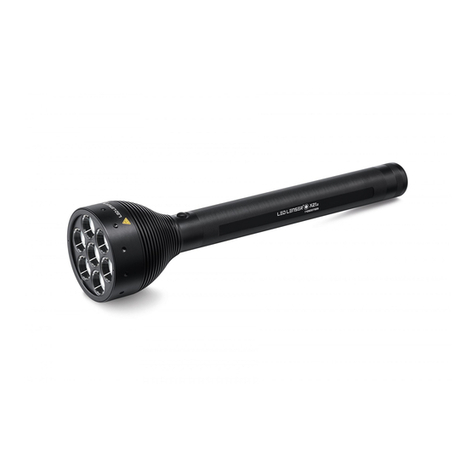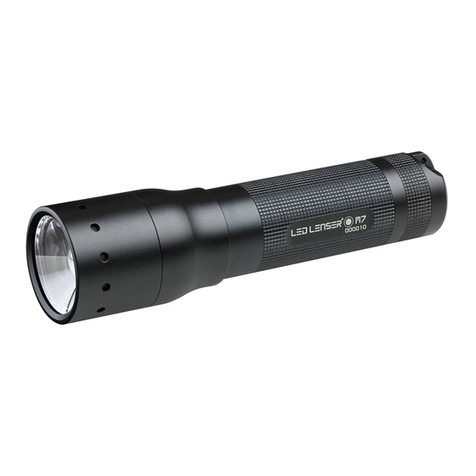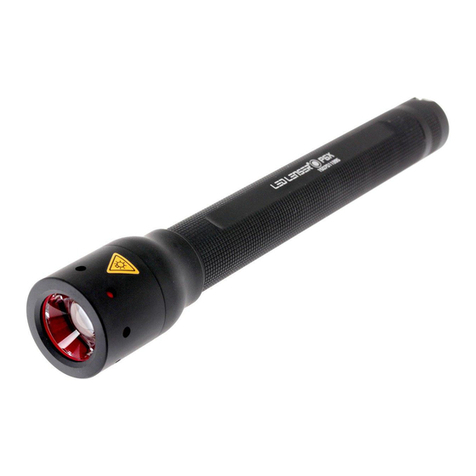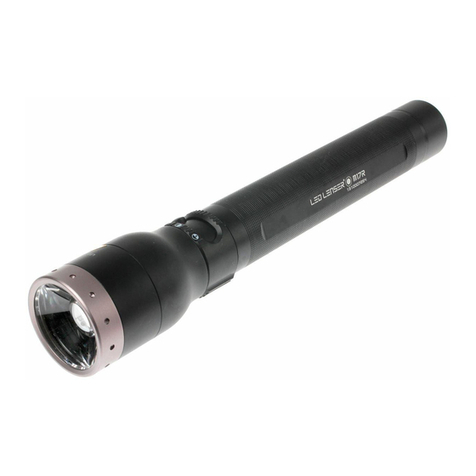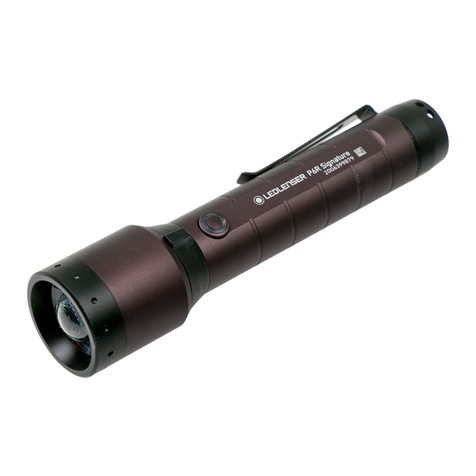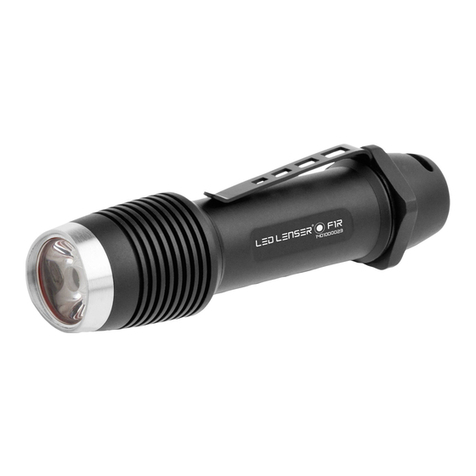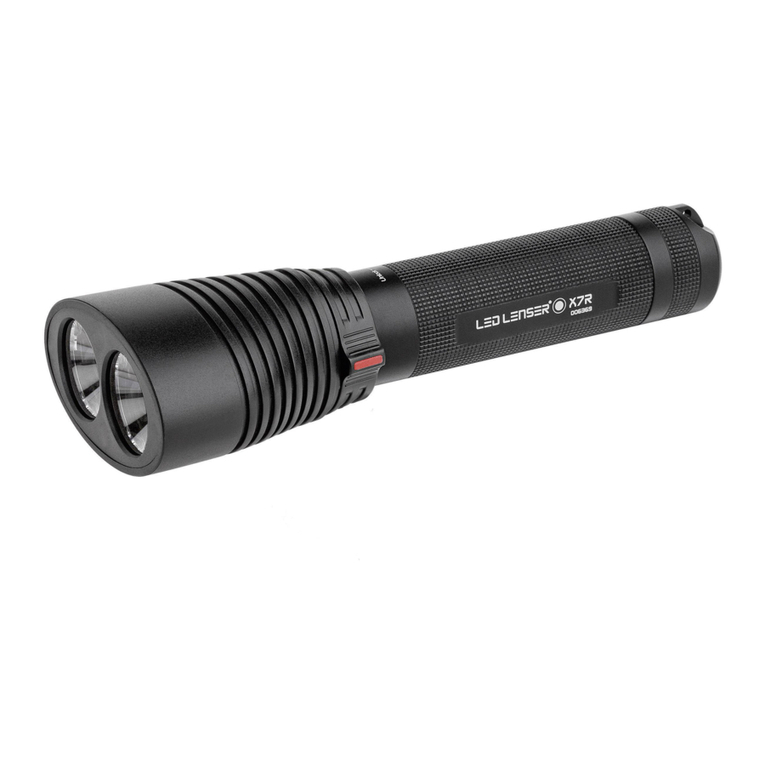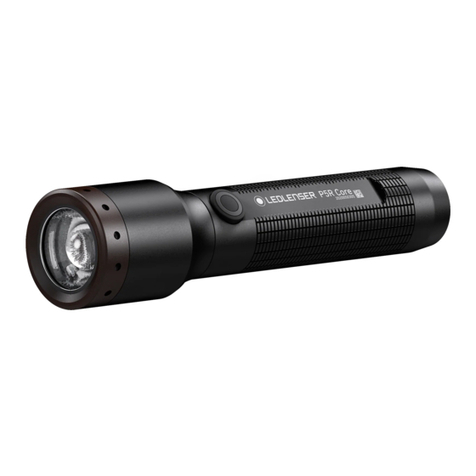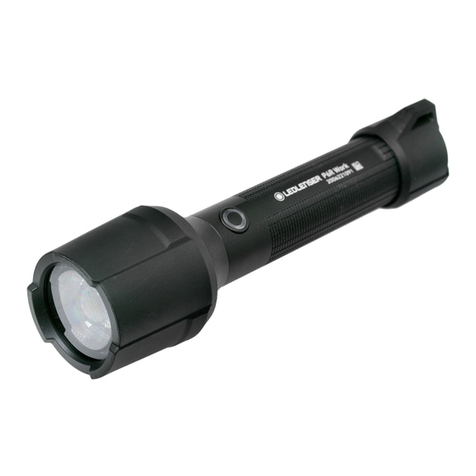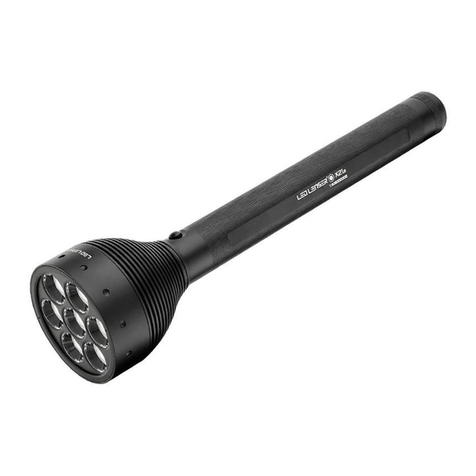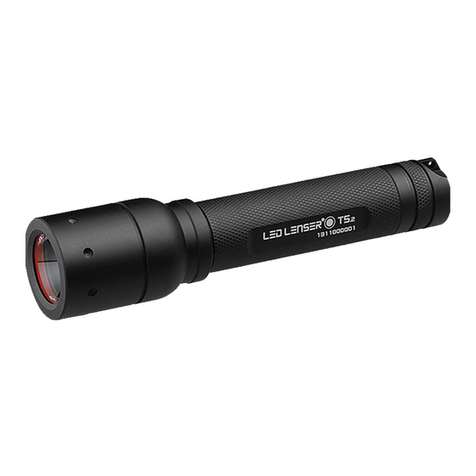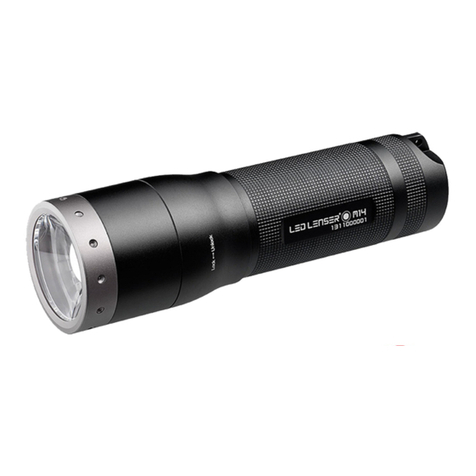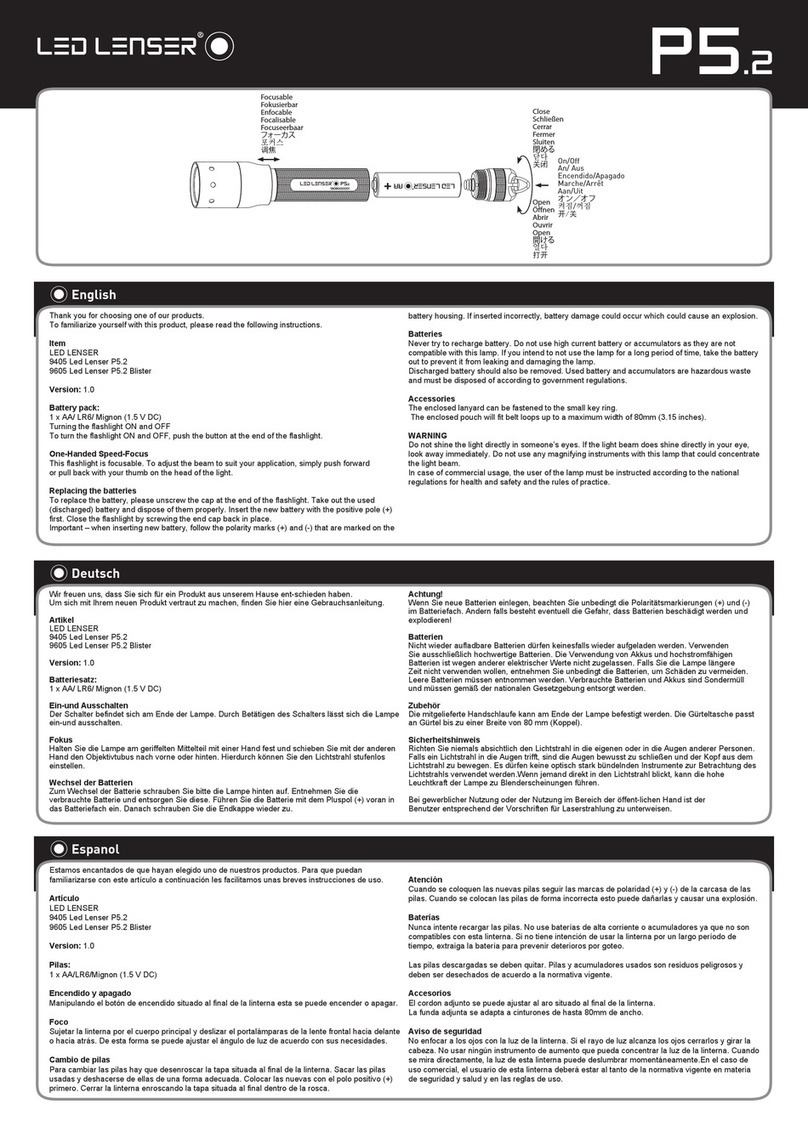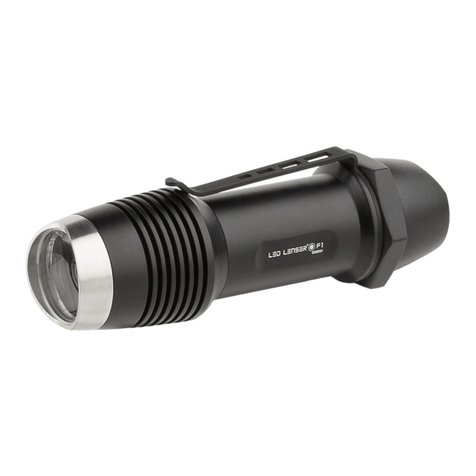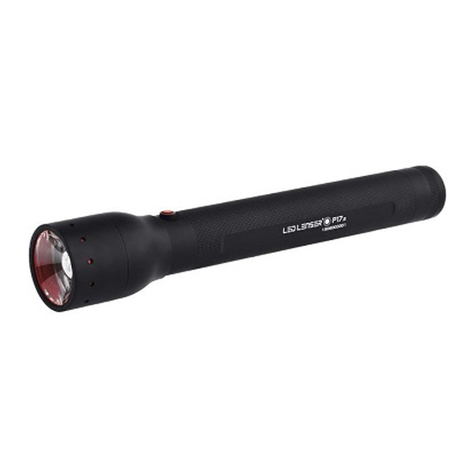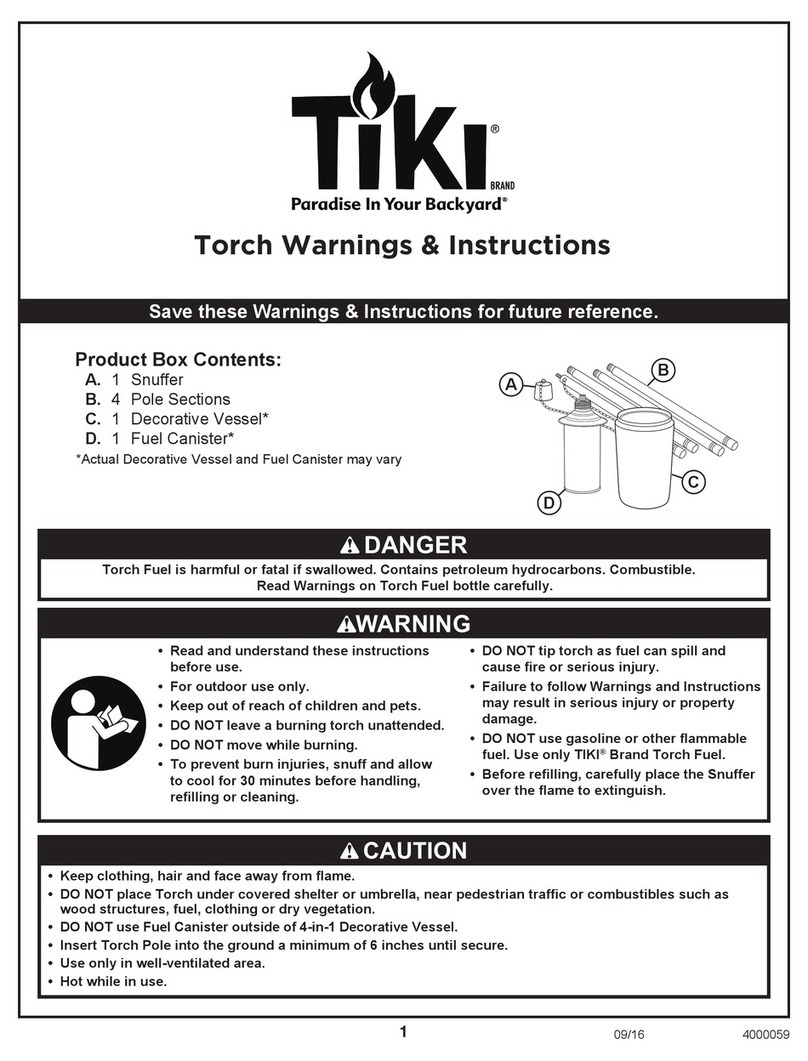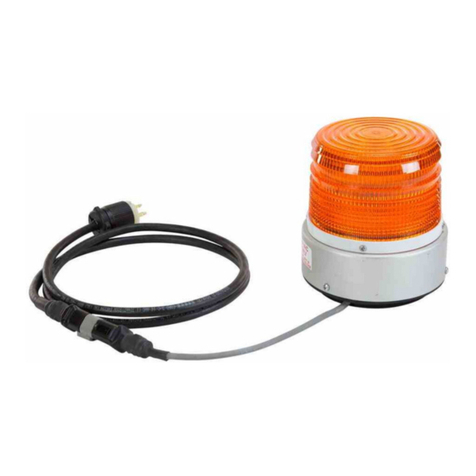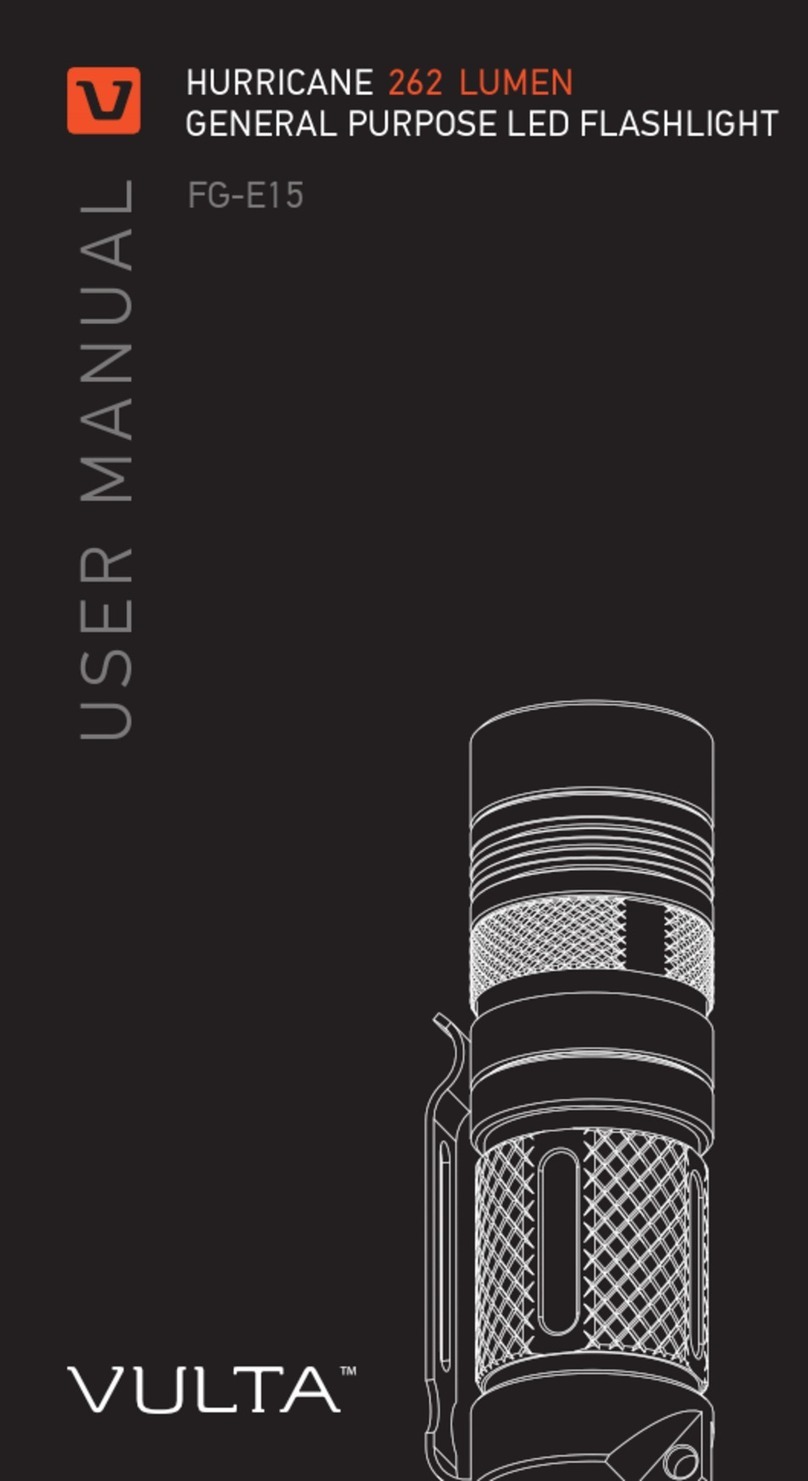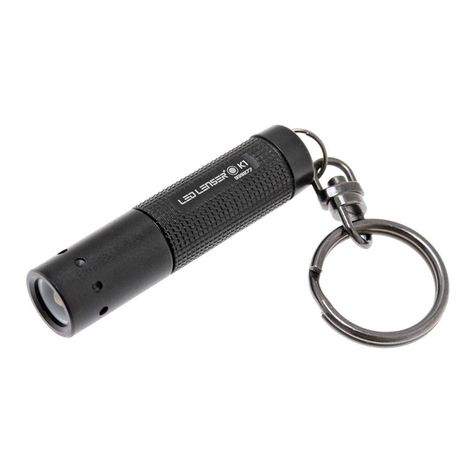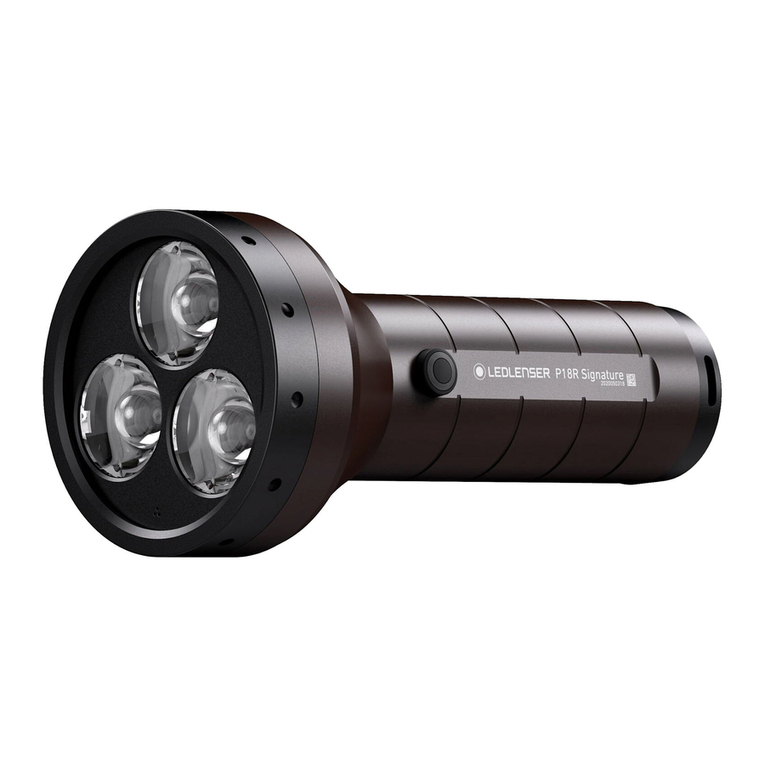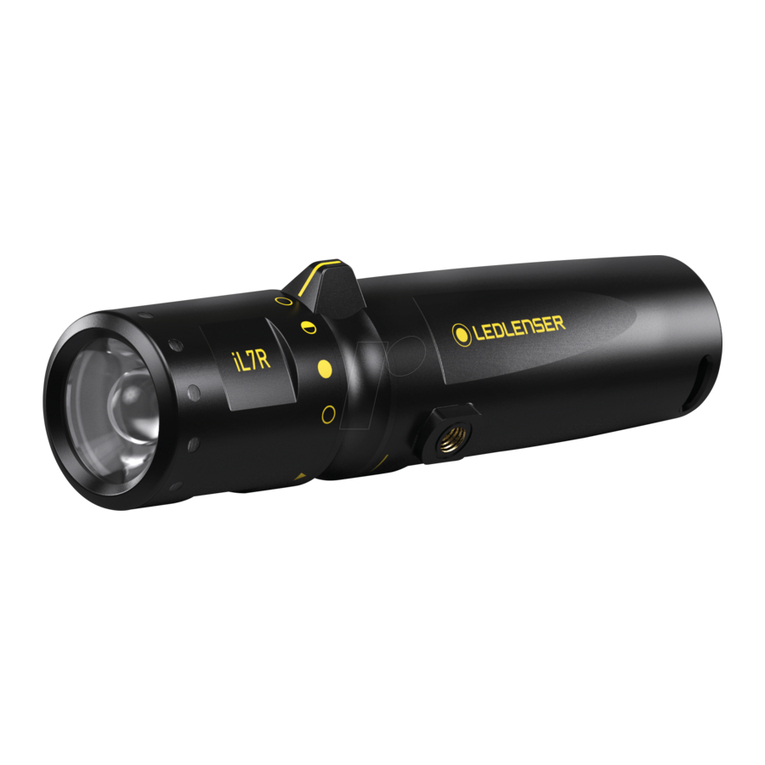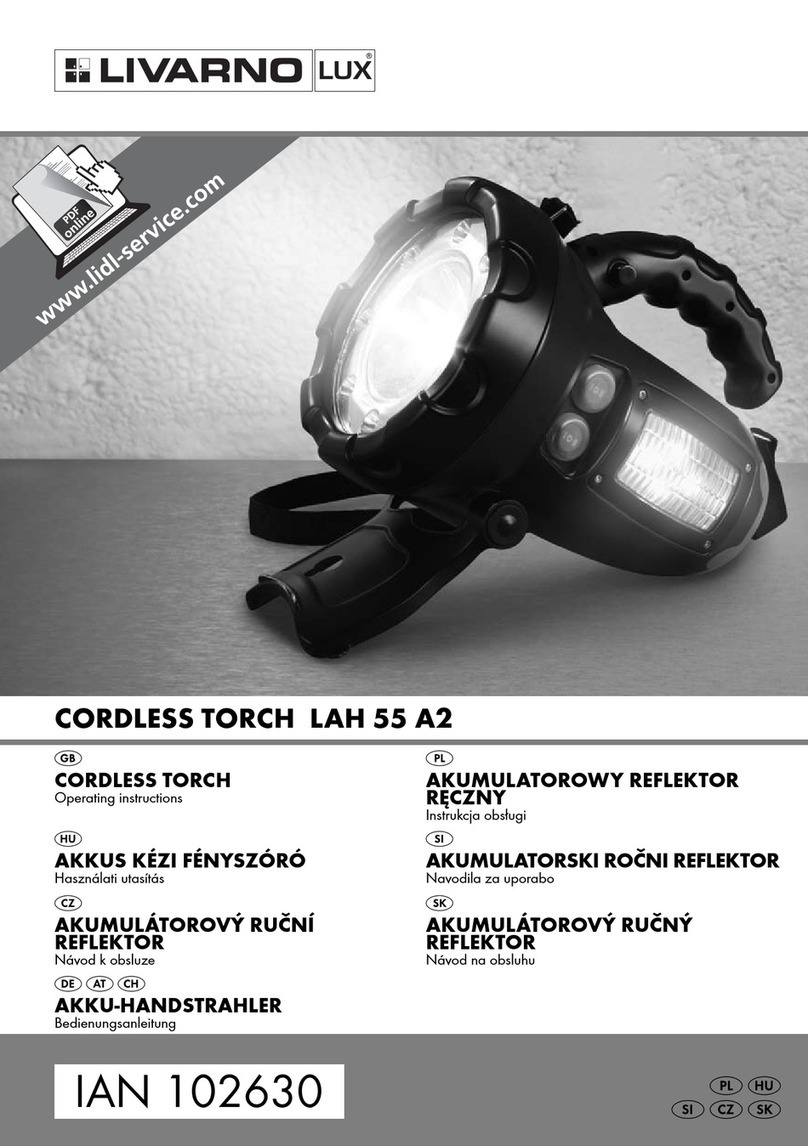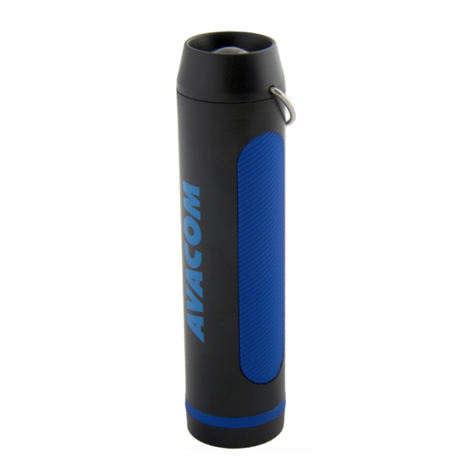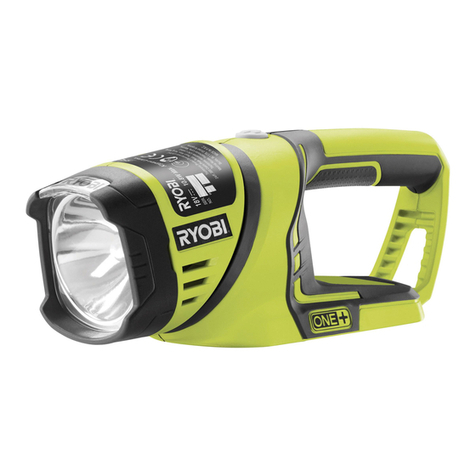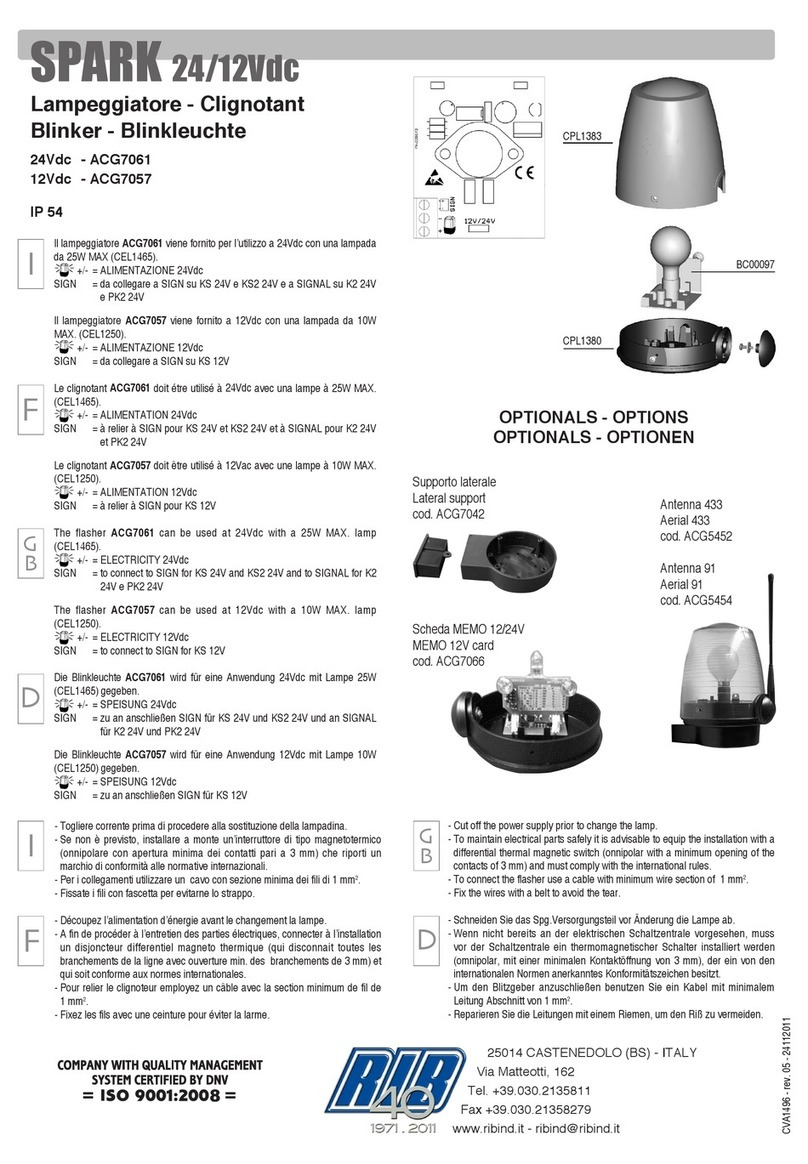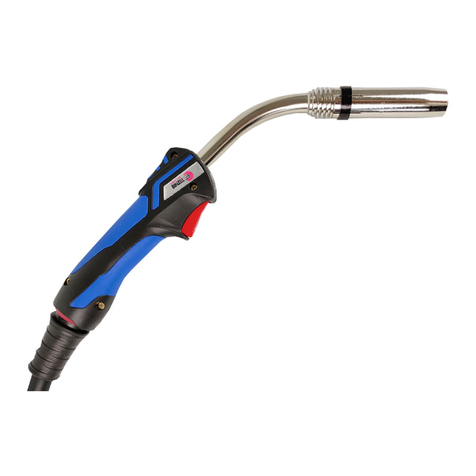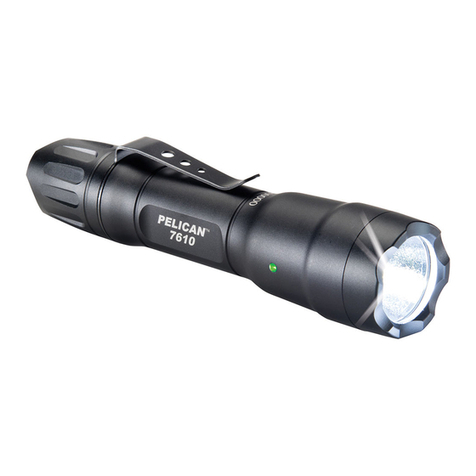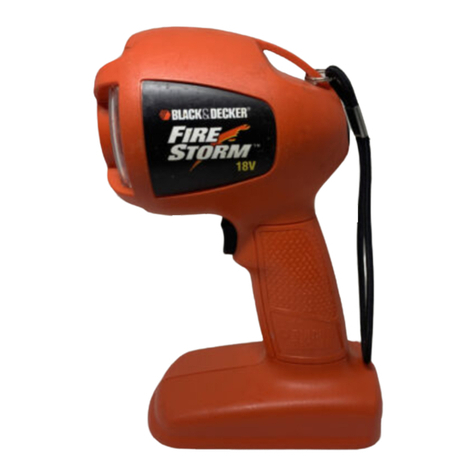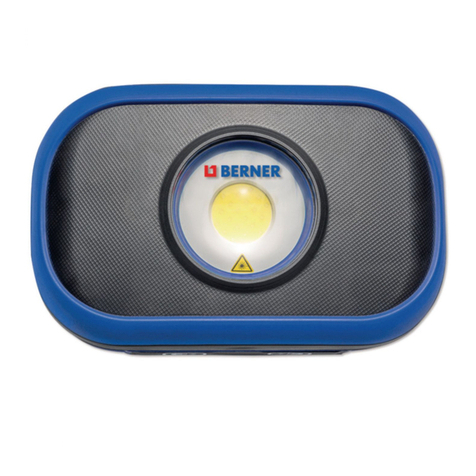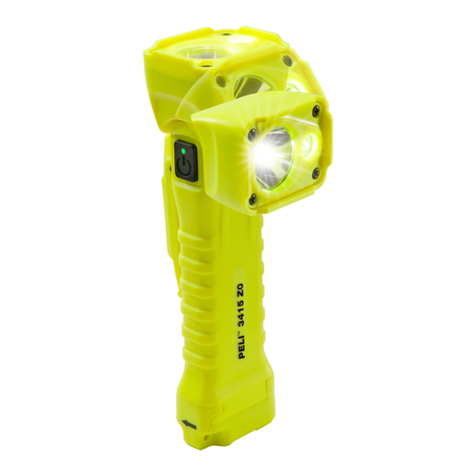We are delighted that you have purchased one of our products.
These are usage instructions to help you familiarise yourself with your new purchase. All the documents accompanying the product must be read
attentively before using the product, preserved carefully and if the product is transferred to a third party, the documents must be handed over as well.
This ensures that maximum benet is drawn from the product and questions from users are anticipated before they arise.
Above all, comply with the warnings and safety instructions and dispose of the packaging material properly.
Under point 13 and point 14 it is explained how the lamp head is separated from the Power Module and the rear part of the shaft of the lamp is
unscrewed. Both must be carried out before the rst use, so that the two insulating lms (one on each side) can be removed and disposed of. These
two lms serve as protection during transport of the "Safety Ytrion Cell" battery pack.
After taking off the insulating lms, be sure not to push the switch button when assembling the lamp. First, screw the rear part to the middle part-
otherwise the lamp might not work properly. Then screw the Power Module (rear part plus middle part) to the lamp head.
Product
LED LENSER
8317-R Led Lenser M17R
Version of the operating manual: 1.0
1. Battery set:
1 × Power Module (shaft including “Safety Ytrion Cell” battery pack); no other batteries or accumulators are permitted
2. Switching on and off
In the front section of the M17R, directly behind the wide head, is the selection ring of the “Fast Action Switch”, in the groove of which the switch button
is located. The name “Fast Action Switch” describes the facility provided by this switch system to quickly select and use various Light Programs and
Light Functions (see Point 7). Turning the selection ring of the “Fast Action Switch” changes the position of the switch button in the groove. Its position
can be adjusted so that it clicks into place in 5 different settings. These positions represent the various Light Programs (see point 7).
In the extreme left position of the switch button, which is marked on the selection ring by a lock symbol ( – Lock Function), the M17R is protected
against accidentally getting switched on. In all the other positions, it can be switched on and the various Light Functions can be used.
What is important here is that there are three ways of actuating the switch button:
a) Switching
The switch button is pressed beyond the pressure point, i.e. so deep that the switch clicks into place. A small sound, a click, can be heard.
b) Brief tapping
The switch button is only tapped briey and not as deeply as in a) above. As a result, the switch does not click into place, there is no click audible and
the switch remains in the starting position when it is released.
c) Prolonged tapping
The switch button is pressed as under b), only slightly but for a longer time.
Here too, the button is not pressed so hard as under a. As a result, the switch does not click into place, there is no click audible and the switch remains
in the starting position when it is released.
This prolonged tapping is required, e.g. to be able to make various settings (see Point 7 and 8).
The descriptions above apply to the switch button of the “Fast Action Switch” in the front section of the M17R. Please do not confuse it with the switch
button (see Point 10), which is formed by the two concentric charging contacts at the end of the torch.
3. Focus
The focus of the M17R can be quickly adjusted with the help of the so-called Speed Focus. For this purpose, hold the torch on the serrated middle
section rmly with one hand and with the other hand, push the wider lamp head in which the reector lens is located, to the front or to the back. By
doing this, you can adjust the light beam continuously variably to suit your needs.
4. Fast Lock
If required, a desired focus setting can be locked by means of the so-called Fast Lock. What this does is to prevent the focus setting from getting
accidentally changed. To do so, the lamp head must be turned left with respect to the shaft, i.e. in the direction of the legend “Lock” on the lamp head.
To release this xed setting and to once again allow the continuously variable setting of the focus (see Point 3), the lamp head has to be turned in the
other direction, i.e. the direction of the legend “Unlock”.
5. Smart Light Technology (SLT)
The M17R is equipped with our Smart Light Technology (SLT). Thanks to the use of a microcontroller, the light output of the LED can be controlled and
the user can use various Light Programs and Light Functions. By using a single switch in conjunction with the selection ring in the “Fast Action Switch”,
it was possible to design the interface to be simple and user-friendly. The pocket torch can give the user light in various intensities and in various
different ways. There are thus two Energy Modes, four Light Programs and a number of Light Functions available. To switch the pocket torch on and
off and to select the various Light Functions, the switch in its front section has to be used. Here, the switch is used in the three ways described above
in Point 2.
What basically applies is that the brightness of the M17R is monitored by the in-built temperature control unit.
6. Energy Modes
By selecting one of the two Energy Modes (Energy Saving or Constant Current), you take a decision on how the energy contained in the accumulator
is used.
1. Energy Saving: The light output is controlled by the integrated Smart Light Technology (SLT). The brightness is matched to the real conditions that
occur during normal use of the lamp, thus providing a longer burn time.
2. Constant Current: This Energy Mode allows the continuous use of all the Light Functions with a more or less constant light output. This Energy
Mode is to be preferred when a high brightness level is more important than a long burn time.
Changing of the Energy Modes
For changing the Energy Mode, the lamp has to be off and the switch button must be in the second position ( ) of the “Fast Action Switch”.
If you now tap the switch button on the lamp head lightly 8 times, followed by a switching operation, and then the brightness increases jerkily, to later
reduce gradually to zero, the M17R is in the Energy Mode 'Energy Saving'. But if the brightness of the M17R remains constant for approx. 2 seconds
after the sudden increase, to then suddenly drop to zero, the M17R is thereafter in the Energy Mode 'Constant Current'.
With this procedure, you can switch between the two Energy Modes. It is not possible to determine in which Energy Mode the M17R is. To nd this out,
you must carry out the procedure. If the M17R is thereafter not in the desired Energy Mode any more, you must repeat the procedure again.
7. Light Programs and Light Functions
As has already been described in Point 2, by turning the black selection ring (with its 5 marks) below the narrowing point of the lamp head, you can
select from between 5 different positions and activate them with the switch button. The 5 positions represent the various Light Programs or the Lock
Function. Thanks to the permanent magnets that are embedded in the selection ring of the “Fast Action Switch”, the ring slides over the lamp housing
when it is turned, and thus ensures contact-less transmission of the selection to the microcontroller in the lamp housing.
7.1 Lock function
In the rst position from the left (the selection ring has been turned to the right till it comes to a stop), the M17R cannot be switched on, either
˚ English
˚ English
intentionally or unintentionally. Thus, the lock function is handy for when the M17R is transported. Also, there could be situations in which the M17R
may/should not be switched on, even unintentionally.
7.2 Light Program Low
If the switch button of the “Fast Action Switch” is in the second position of the selection ring, you can use the Light Function Low Power with its reduced
brightness. By briey tapping and letting go, you can switch to the Light Function Power with full brightness. When you tap it again, you can switch
between the Light Programs Low Power and Power. One more switching operation, and the lamp is off.
When the M17R is off, tapping can be employed, e.g. to send signals of various length in Morse code with reduced brightness.
7.3 Light Program Action
In the third position of the selection ring, by switching or tapping, the Light Function Power (full brightness) is immediately usable. As with Light
Program Low, here too, it is possible to use tapping for sending Morse signals, but with full brightness in this case.
Upon switching, the Light Function Power is rmly set and by brief tapping, it is possible to switch between the Light Functions Power and Dim.
Upon switching to ‘Dim’ by tapping, if the switch button remains tapped for a longer time (prolonged tapping), the M17R starts to slowly change the
brightness between low brightness and full brightness. The lamp will extinguish for one short moment if the brightest or lowest luminosity is reached.
Upon releasing the switch, the M17R continues to glow with the current brightness level. This brightness level remains saved, i.e. remains set for the
light function Dim, when the M17R is switched off. This brightness of the light function Dim is only lost, or changes, when the Power Module (shaft
with “Safety Ytrion Cell” battery pack) is unscrewed at the head (also see the Reset function under Point 9). Of course, it also changes if specically
changed by the user as described above.
One more switching operation, and the lamp is off.
7.4 Light Program Signal
In the fourth position, by switching or tapping, the Light Function SOS (3 short, followed by 3 long, followed again by 3 short ashes) can be invoked
immediately.
If, after a switching operation, the switch is tapped, the Light Function Blink (slow, continuous blinking) is activated. Tapping once again results in the
Light Function Signal Blink (2x blinking at short intervals)
One more switching operation, and the lamp is off.
7.5 Light Program Defence
The Light Mode Defence is the one on the extreme right on the selection ring; it can be selected by turning the selection ring completely to the left till it
comes to a stop.
Upon switching, the Light Function Strobe is set and by tapping briey, it is possible to toggle between Strobe and Power.
One more switching operation, and the lamp is off.
Here, too, the Light Functions are revolving, like with the Light Modes 2, 3 and 4. This means, for example, with Light Program 5, that after the Light
Function Power, one more tap leads to the Light Function Defence. Thus, tapping does not take you into a dead end; there is a continuous circular
series of selected light functions.
When the M17R is glowing in one of the Light Functions (2, 3 4 or 5), it also glows after a changeover (by turning the selection ring of the “Fast Action
Switch”) between these 4 Light Functions. With such a changeover, the M17R has the light function that it also had when switched on directly (e.g. with
the Light Program Signal, the Light Function SOS).
8. Emergency Mode / Emergency Light Function
When the Emergency Mode is activated, the M17R has an emergency light function. For this purpose, the mode has to be activated and the M17R
has to be connected to the charger (position light at the charger glows blue, see Point 10). In this case, the pocket torch automatically goes on when
the electric supply that is providing energy to the charger fails. If positioned meaningfully, the M17R, when it is glowing, can facilitate quickly nding
an escape route in an emergency, or the lamp can be quickly found and picked up, already on. If this function is active, the M17R glows automatically
even if the charging process is interrupted by removing the M17R. Therefore, the function can also be used when the M17R has to be ready for
immediate use.
To set the Emergency Mode, set the “Fast Action Switch” to Light Program action and tap prolonged for about 10 seconds. The M17R glows for these
10 seconds and then blinks. After blinking, the light turns off. When it ashes 4 times, Emergency Mode is activated; if it ashes twice, Emergency
Mode is disabled. If this procedure is carried out again, the setting toggles between activated and disabled and signals this by a corresponding
blinking.
9. Reset function
If the Power Module (shaft with “Safety Ytrion Cell” battery pack) is unscrewed completely at the head and the two parts are screwed together again
only after a little while, you have "reset" the M17R. You have thus reset a few functions:
- As Energy Mode, Energy Saving is active (see Point 6).
- The Emergency Mode (see Point 8) is active.
- This lamp function Dim (see Point 7.3) is set to the lowermost brightness
10. Charging
The Power Module (shaft without lamp head) contains the “Safety Ytrion Cell” battery pack, the accumulator.
Charge your M17R only in a dry place.
For charging, connect the mains plug on one side to the accompanying charger (Input: 100 V to 240 V / 50 Hz to 60 Hz) and on the other side, to a
power socket. Then connect the extension cable of the charger to the cable of the magnetic charging socket, whose blue position light then starts
to glow. You can now connect the concentric charging contacts at the end of the M17R to the magnetic charging socket. When the lamp has been
correctly connected, the charging display glows red (see Point 11) and the charging starts. The Power Module (shaft with the “Safety Ytrion Cell”
battery pack) with the unscrewed lamp head can also be charged.
See the following section on the subject of the charging indicators (see Point 11) for more information.
Note – Please ensure that there is no short-circuit at the charging contacts. The charging contacts may not be touched with moist or metallic objects.
The magnetic charging socket can also be inserted in the cylindrical part of the charger bracket, which is a part of the supplied kit, and then locked in
place by turning a couple of times in the counter-clockwise direction like a bayonet catch. The lock is released by rotating in the other direction. The
bracket can be fastened on the wall with dowels (not scope of delivery) in such a way that the blue position lamp of the magnetic charging socket, for
example, glows downwards. Please use a sufcient number (min. 4 pieces) and suitable dowels, depending on the material of the wall.
The orientation described suggests itself when you wish to use the Emergency Module / Emergency Light function (see point 8) since the M17R glows
upwards in case of a power failure. On the other side of the bracket, the M17R can be joined to the bracket with 2 rubber rollers and xed permanently
by using the rubber gusset that is located at the level of the two rubber rollers. The latter suggests itself if there are acceleration forces acting on the
M17R. In this manner, the M17R can be xed in the bracket inside the vehicle if the charger bracket is xed permanently to a vehicle.
Using an optionally available car charger connection, the M17R can also be charged at the cigarette lighter and sockets in the vehicle. These
accessory units match themselves automatically to the respective input voltage (12 V to 24 V).
11 Charge indication
Approx. 2 cm before the end of the shaft of the M17R, there is a narrow ring, which, during the charging process, indicates the charge status of the
battery through lamps of different colours.
04
03
